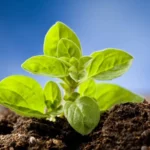Think about how happy you would be to go into your garden and harvest blueberries that have ripened in the sun directly from your potted bush. With the help of this in-depth instruction, you will be able to growing blueberries in pots, which are ideal for patio gardens and tiny spaces alike.
Benefits of Growing Blueberries in Pots
Examine the benefits of growing blueberries in pots, such as having more control over soil conditions and the flexibility to relocate your blueberry shrub to receive the best possible sunlight.
Choosing the Best Types of Blueberries:
Some blueberry types are particularly well-suited for pot growing:
- “Top Hat” grows to a height and breadth of around 18 to 24 inches, making it compact and perfect for small places while yielding a bountiful crop of berries.
- “Sunshine Blue” is well-known for its ability to withstand heat and for its aesthetic appeal. At 3–4 feet tall, it is an excellent option for pot cultivation.
- “Patriot,” a variety that thrives in colder areas, needs more room to grow, reaches heights of three to five feet, and produces big, delicious berries.
Establishing the optimal soil conditions:
- To start, fill your pot with a base of 70% peat moss to retain moisture and add natural acidity.
- For every five gallons of soil, add two cups of old coffee grounds to slightly reduce the pH and enrich the soil.
- To maintain acidity during the growing season, use a diluted vinegar solution (1 tablespoon white vinegar per gallon of water) every 4 weeks.
- Pine needles or shredded pine bark used in a 2-inch layer will help keep the soil moist and acidic.
- As directed on the packaging, apply 1 tablespoon per square yard if the pH is higher than 5.5.
- During the growing season, use 1 tablespoon of Epsom salt per gallon of soil once a month to provide the necessary magnesium.
- Add a handful of calcium to each pot every season without significantly changing the pH.
- Examine often, every two to three months, with a soil pH meter.

Easy-to-follow guide for Growing Blueberries in Pots:
- Choose a pot that has drainage holes and measures between 18 and 22 inches in diameter.
- To improve drainage, add a layer of gravel to the bottom that is one inch thick.
- Leaving space at the top, fill the pot with your prepared acidic soil mix.
- The blueberry shrub should be positioned at the same depth as its nursery container. Place several pots two to three feet apart.
- Don’t water the soil excessively, but keep it damp.
- Every week, make sure there is constant wetness.
- Make sure the pot gets six to eight hours a day in full to partial sunlight.
- In early and late spring, apply a fertilizer formulated for plants that prefer acidic soil, using one tablespoon per gallon of soil.
- Every year in late winter, prune to promote healthy growth and get rid of any dead or crossed branches for growing blueberries in pots.
- If you live in a chilly climate, cover the pot with burlap or move it to a protected spot to protect the roots.
- When blueberries are completely blue and easily separate, which is usually toward the end of summer, they are ready.
Conclusion:
Growing blueberries in pots offers a convenient and rewarding way to enjoy fresh, homegrown fruit even in small spaces. Starting a blueberry garden in a pot is a satisfying project that will yield beautiful and tasty results. Growing these colorful berries in pots improves the appearance of your yard while providing you with the sweet pleasures of homegrown sweetness. Your potted blueberry bushes may thrive with the correct care, giving you a delicious harvest at your fingertips. So explore the world of container gardening, learn how to grow blueberries, and see how your area becomes a natural abundant sanctuary.
A frequently asked questions:
Q1: What is the best climate for blueberries?
A1: Blueberries thrive in a cold to temperate region with full light, well-drained acidic soil (pH 4.5–5.5), and moderate humidity. They flourish in areas with cold winters to ensure appropriate dormancy and warm summers to promote fruit growth.
Q2: What is the best fertilizer for blueberries?
A2: The ideal fertilizer for blueberries is an acidic fertilizer, such as one designed for azaleas or rhododendrons, with a balanced or slightly higher nitrogen ratio (10-5-5). Cottonseed meal, sulfur, and composted pine needles are all organic choices that help keep soil acidity levels stable and support healthy development.
Q3: What type of soil is best for growing blueberries in containers?
A3: In soil that has an acidic pH of 4.5 to 5.5, blueberries grow well. When growing plants in pots, use a potting mix made especially for acid-loving plants.
Q4: When is the best time for growing blueberries from seed?
A4: After the cold stratification period, early spring is the ideal time to plant blueberry seeds.
Q5: What is the optimal temperature range for indoor blueberry cultivation?
A5: Warm temperatures (60–70°F/15–21°C) during the day and slightly lower nights (40–50°F/4–10°C) are good for indoor blueberry growth.



